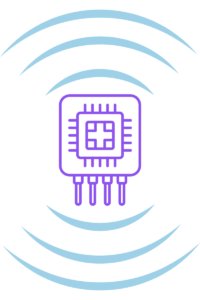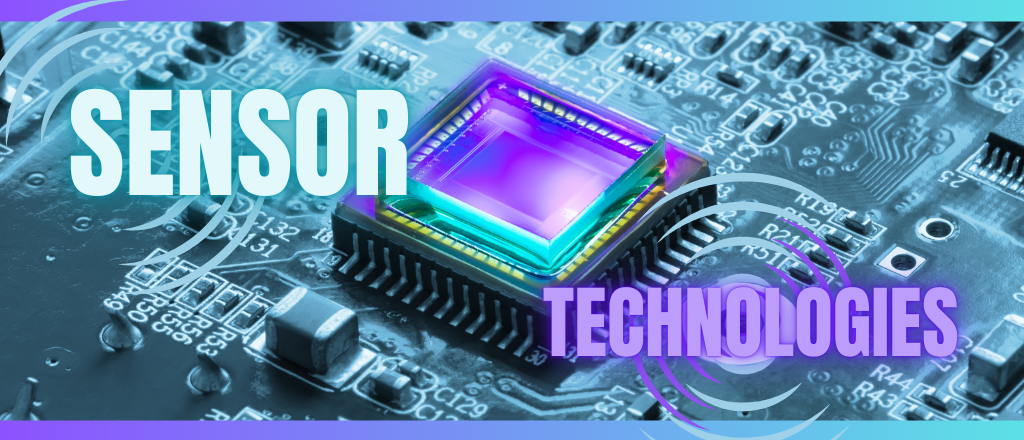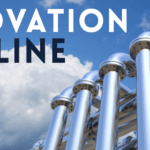Sensors Rank as a Critical Component for Industry Innovation and Competitiveness
Sensor technology is transforming industries by providing real-time monitoring of supply chains, product quality, and consumer interactions. For sectors like CPG, Defense, Manufacturing, and Energy, sensors offer crucial transparency and superior control. By tracking key conditions such as temperature, moisture, pressure, and handling, businesses can ensure product safety, optimize logistics, and reduce waste.
Sensors play a vital role in gathering real-time data that is essential to maintaining quality, safety, and efficiency across industries. Incorporating sensors into an innovation strategy allows companies to gather valuable data that enhances decision-making, streamline operations, and improves product offerings. With real-time insights, businesses can adapt quickly to market demands, improve efficiency, and offer improved experiences for customers.
Here is an overview of sensors across various industries and the key measurements sensors can track today. Sensor technology is always improving and moving into new sectors as their use is essential for staying competitive in today’s data-driven landscape.
How Sensor Technology is Transforming the CPG Industry:
Ensuring Product Quality, Supply Chain Transparency, and Personalized Consumer Experiences
Smart sensors monitor supply chains, ensure product quality, and enhance consumer interactions. These devices track real-time conditions during transportation and storage, maintaining product integrity from production to retail shelves. Smart packaging equipped with sensors is creating new opportunities for consumer engagement and personalized experiences.

Key Impact Areas:
- Supply Chain Monitoring: Sensors track real-time conditions during transportation and storage, ensuring product integrity from production to retail shelves.
- Consumer Interactions: Smart packaging equipped with sensors can enhance consumer engagement and product usage insights, fostering brand loyalty and personalization.
Sensors Maintain Quality in Consumer Packaged Goods:
- Temperature and Humidity: Ensures product integrity during storage and transportation.
- Vibration/Shock: Monitors potential product damage during shipment.
- Shelf Life Monitoring: Tracks expiration dates and freshness of products.
- Consumer Interaction Data: Tracks product usage and engagement patterns.
Sensor Technology in the Food and Beverage Industry:
Enhancing Safety, Freshness, and Supply Chain Efficiency
In an industry where safety and freshness are paramount, sensors play a crucial role in maintaining quality and regulatory compliance. They monitor temperature, humidity, and freshness to reduce spoilage and waste, while also improving supply chain traceability. This real-time data collection ensures food safety from farm to table.

Key Impact Areas:
- Product Quality Control: Sensors monitor temperature, humidity, and freshness to maintain food safety and quality, reducing spoilage and waste.
- Supply Chain Traceability: Real-time data collection improves transparency and ensures regulatory compliance, particularly for perishable goods.
Safety with Sensors for Food and Beverage:
- Temperature Control: Maintains proper cold chain management for perishable items.
- Humidity Levels: Prevents spoilage by controlling moisture levels.
- Gas Composition (e.g., Oxygen, CO2): Ensures optimal atmospheric conditions within packaging for freshness.
- Contaminant Detection: Monitors potential contamination risks in food production.
Launching Sensors in the Aerospace and Defense Sectors:
Increasing Safety, Efficiency, and Supply Chain Optimization
Sensors are fundamental components in aerospace, enhancing safety protocols and optimizing complex supply chains. They monitor structural integrity, track critical flight data, and ensure the stability of sensitive components during flights. This technology is vital for improving performance and operational readiness in the sector.

Key Impact Areas:
- Equipment and Safety Monitoring: Sensors embedded in aircraft and spacecraft monitor structural integrity and operational conditions, enhancing safety protocols.
- Supply Chain Optimization: Sensors help streamline logistics for complex aerospace supply chains, ensuring that parts and materials arrive on time and meet strict performance criteria.
Sensors are Fundamental Components for Aerospace & Defense:
- Structural Integrity: Monitors stress, strain, and material fatigue in aircraft and spacecraft components.
- Altitude, Pressure, and Vibration: Tracks critical flight data for safety and performance optimization.
- Temperature and Environmental Conditions: Ensures the stability of sensitive components during flights.
- Fuel Levels and Consumption: Optimizes fuel use for long flights.
The Impact of Sensor Technology on the Energy Sector:
Driving Sustainability, Efficiency, and Predictive Maintenance
As the world shifts towards sustainable practices, sensors are driving efficiency and enabling predictive maintenance in the energy sector. They monitor infrastructure such as pipelines, wind turbines, and solar panels, optimizing performance and reducing downtime. By detecting early signs of wear or malfunction, sensors help prevent costly outages and improve overall reliability.

Key Impact Areas:
- Operational Efficiency: Sensors monitor infrastructure such as pipelines, wind turbines, and solar panels, optimizing performance and reducing downtime.
- Predictive Maintenance: By detecting early signs of wear or malfunction, sensors help prevent costly outages and improve overall reliability in energy production and distribution.
Modern Energy Industry Sensor Applications:
- Pressure and Flow Rates: Monitors performance in pipelines and energy generation equipment.
- Temperature: Tracks heat in engines, turbines, and other machinery to prevent overheating.
- Vibration: Identifies early signs of mechanical issues to prevent breakdowns.
- Corrosion Levels: Monitors the health of infrastructure like pipelines and storage tanks.
Sensor Technology in Life Sciences:
Ensuring Precision, Safety, and Innovation in Medical Treatments and Pharmaceuticals
In the life sciences industry, precision and safety are crucial. Sensors enhance clinical trials, research environments, and patient care by monitoring lab conditions, ensuring the integrity of pharmaceuticals, and tracking sterility levels. This technology is instrumental in maintaining the highest standards for medical treatments and research.

Key Impact Areas:
- Clinical and Research Advancements: Sensors play a crucial role in monitoring lab environments, clinical trials, and patient treatments, ensuring precision and safety.
- Supply Chain Integrity: For sensitive products like pharmaceuticals and medical devices, sensors ensure the proper conditions are maintained throughout the supply chain, from manufacturing to delivery.
Sensors for Life Science and MedTech Applications
- Temperature: Maintains the integrity of pharmaceuticals, medical samples, and lab environments.
- Sterility Monitoring: Tracks the cleanliness and contamination levels in lab settings.
- Environmental Factors (Humidity, CO2): Ensures optimal conditions for biological samples and experiments.
- pH and Chemical Concentrations: Monitors levels during chemical reactions or in pharmaceutical products.
How Sensor Technology is Enhancing Precision and Efficiency in Chemicals and Materials Manufacturing:
Real-Time Monitoring and Waste Reduction
Smart sensors are revolutionizing the chemicals and materials manufacturing sectors by enabling real-time monitoring of production conditions. They track chemical composition, temperature, and environmental factors to maintain quality and safety standards while optimizing production processes and reducing waste.

Key Impact Areas:
- Product Quality Monitoring: Sensors track the chemical composition, temperature, and environmental conditions in real time to maintain quality and safety standards.
- Efficiency in Manufacturing Processes: Smart sensors help automate and optimize production processes, minimizing waste and improving the efficiency of materials usage.
Precision with Sensors in Manufacturing
- Chemical Composition: Ensures that the correct proportions of raw materials are used in manufacturing processes.
- pH Levels: Tracks acidity or alkalinity during chemical production.
- Temperature and Pressure: Monitors manufacturing conditions to ensure product quality.
- Toxic Gas Detection: Ensures safety by monitoring hazardous emissions during chemical reactions.
Smart Sensor Case Studies
Case Study 1: Predictive Maintenance in Wind Turbines
A study conducted by the National Renewable Energy Laboratory (NREL) explored the use of Supervisory Control and Data Acquisition (SCADA) data for developing fault detection and diagnostic techniques in wind turbines. Researchers investigated how continuous monitoring of wind turbine health using automated failure detection algorithms could improve turbine reliability and potentially reduce maintenance costs. The study focused on detecting failures before they reach a catastrophic stage and eliminating unnecessary scheduled maintenance.
The researchers used various measurements from the turbine, including rotor speeds and produced power, to develop anomaly detection algorithms. They investigated classification techniques for capturing fault signatures, aiming to enable early detection of issues such as gear and bearing failures. The study suggested that this approach to predictive maintenance could lead to more efficient operations and reduced downtime.
This case study demonstrates the potential of using existing SCADA data in conjunction with additional sensor networks to implement predictive maintenance strategies in wind turbines. The research highlights the importance of developing robust algorithms for fault detection and diagnosis to enhance wind turbine performance and reliability.
Case Study 2: Smart Packaging in the Pharmaceutical Industry
Schreiner MediPharm, a Germany-based global provider of innovative functional label solutions for the healthcare industry, developed a Smart Blister Card that enables digital adherence monitoring for medication intake. This smart packaging solution extends standard multi-dose blister packs with integrated electronics and conductive lines. Key features of the Smart Blister Card include:
- Real-time data generation: When a patient removes a tablet from a cavity, the system records data such as the exact time of pill removal, the specific cavity, and the dose it contains.
- Data transmission: The collected data is stored in the Smart Blister Card and can be transmitted to a database via a smartphone app or a reader using NFC or Bluetooth technology.
- Flexibility: The technology can be inconspicuously integrated into the packaging design and is suitable for nearly all existing multi-dose and single-dose blister packs.
- Ease of use: Patients can take their tablets as usual, as the cavities can be pushed through easily.
- Additional features: Options include temperature monitoring for sensitive active ingredients and smartphone apps that provide patients with digital self-monitoring support and reminders.
The Smart Blister Card is designed to help reduce the risks associated with polypharmacy and enhance therapeutic success. This technology is particularly valuable for clinical trials, where medication adherence is critical for accurate results and efficient study processes.
Case Study 3: Precision Agriculture with IoT Sensors
A doctoral dissertation by Nipuna Chamara at the University of Nebraska-Lincoln explored the integration of Artificial Intelligence (AI) and Internet of Things (IoT) technologies in agriculture, focusing on crop monitoring and soil water property modeling. The research addressed two key issues in precision agriculture: the digital divide in crop monitoring and the challenges associated with using in-situ soil moisture sensors for irrigation decision-making. Key aspects of the study include:
- Development of the AICropCAM platform: This innovative system uses deep learning models to extract useful information such as crop type, canopy coverage, and pest pressure from images. The platform can transmit this data to cloud servers through low-power, long-range communication methods, helping to bridge the digital divide in crop monitoring solutions.
- Soil water property prediction: The research explored the use of machine learning models to predict soil water properties, including soil water content, soil water deficit, and remaining water content. These models rely on above-canopy sensors and real-time weather data, rather than traditional in-situ soil moisture sensors.
- Promising results: The soil water property prediction models, trained using data from 2022 and 2023, showed prediction accuracy above 95%. However, the researcher noted that these models require further long-term testing before commercial use.
- Potential impact: The study suggests that the integration of AI and IoT can advance crop monitoring practices for precision agriculture in mid-western irrigated cropping systems. The AICropCAM platform and the above-ground sensor approach for soil water property estimation have the potential to enhance crop monitoring and improve irrigation decision-making tools for pivot irrigation systems.
This study emphasizes the potential of sensor-based IoT technologies to improve agricultural practices and decision-making in precision agriculture.
To read about other important technology topics on the 5 Year Innovation Forecast, please visit our informative article series.
For in-depth details on this technology topic and its potential impact on your organization, contact our Technology Scouting and Innovation Analyst Team to assist with your R&D and innovation objectives. Ezassi provides tailored research reports, strategic innovation pipeline management, and the tools to help prioritize projects.






